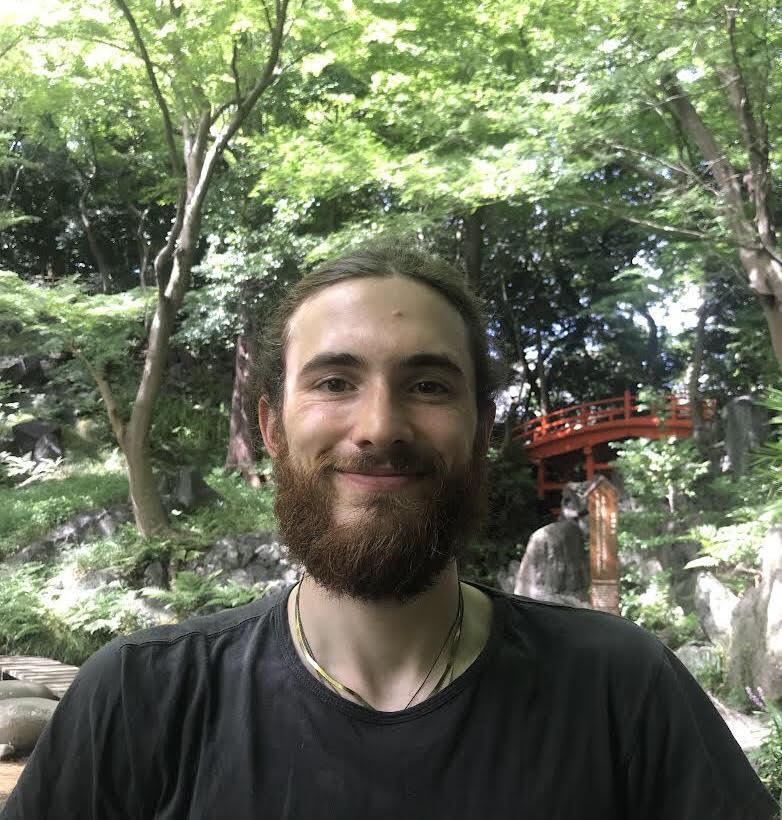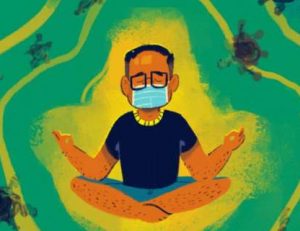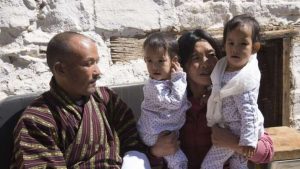Zoom two hours south of Tokyo to the coast of Enoshima and—with the right pair of glasses—you might glimpse a Buddhist temple floating in the clouds. This groundbreaking virtual Dharma space is the newest digital extension of Dokuon-ji, a 400-year-old Rinzai temple founded in 1619 and now in a sleepy suburb of the city of Yokosuka.
Born of opportunity during the COVID-19 lockdown, Dokuon-ji’s digital evolution into the the virtual landscapes of the metaverse exemplifies a skillful blending of tradition with modernity, offering an inviting path into contemplative practice that is appealing to Japan’s growing population of socially isolated and highly reclusive people.
The metta monk
At the helm of this zendo in the sky is Reverend Soin Satoshi Fujio, a fourth-generation Rinzai priest and head of Dokuon-ji, the family temple that he inherited from his father after a successful career in international banking and following rigorous years of monastic training.
Upon being ordained, Rev. Fujio began counseling people experiencing mental health problems and suicidal ideation, while also regularly teaching Zen meditation and tai-chi to Japanese and international students. As a founding member of Japan’s Association of Buddhist Priests Confronting Self-death and Suicide, he trains young priests in counseling and works at Yokosuka City Hall as a “gatekeeper,” helping at-risk individuals find the necessary resources to deal with mental illness, family problems, and other social challenges.
Concerned with the exacerbating impact of strict social isolation measures, Rev. Fujio began offering his counseling and group meditation sessions on Zoom to help equip more people with the tools for effective emotional regulation and spiritual grounding in uncertain times. However, it wasn’t until connecting with technologist and longtime friend Kouji Miki that Dokuon-ji fully entered the cloud.

Zen 2.0
Kouji-san understands firsthand the life-affirming value of Zen. After losing his job to corporate restructuring in the wake of the 2008 financial crisis, he fell into a difficult period of depression. Seeking recovery from within, Kouji-san began diligently practicing zazen meditation every morning, a persistent habit that has helped him to clear and balance both mind and body.
Through recalibrating himself in this way, Kouji-san felt a deep sense of gratitude to the Zen tradition and experienced a surge of ideas for how to combine the contemplative path with innovative thinking for rippling worldly impact. These insights led him to co-found zenschool, a professional coaching service, in 2011, and Zen 2.0, now Japan’s largest international conference on mindfulness, in 2017.
For the same reasons as Rev. Fujio, Kouji-san began using virtual means of communication for zenschool during Japan’s prolonged COVID-19 “state of emergency.” Constricted by small boxes and only subtle facial expressions, Zoom proved inadequate for the deep dialogue he was seeking with participants, and so Kouji-san began to experiment with virtual reality. Discovering the potential of this technology for immersive interaction, Kouji-san offered to build a metaverse zendo for Rev. Fujio—a natural extension of the Zoomcasts already being regularly streamed from Dokuon-ji.
Virtual practice
With a keen eye for detail, Kouji-san meticulously scanned the interior of Dokuon-ji in order to recreate the temple’s artwork, tatami design, and even meditation cushions in the new virtual space.
Accessible via the browser-based Spatial.io app, Rev. Fujio now dons a Quest 2 VR headset to facilitate his ongoing teaching and counseling work in the metaverse temple—often tailoring the surrounding scenery and atmospheric soundscape to welcome participants from different regions. As a therapeutic tool, Rev. Fujio reports that these small details go a long way toward helping individuals feel safe and comfortable expressing themselves authentically.
Beyond classic zazen (坐禅) sitting meditation, Rev. Fujio’s sessions often feature lesser-known practices from the rich tradition of Japanese Zen, including dou-zen (動禅) movement meditation, and ritszen (立禅) standing meditation. Drawing on more than 40 years of experience practicing tai-chi and qigong, his approach emphasizes the importance of physicality for holistic well-being, an important reminder for practitioners using avatars with optional legs.
Although he professes humble technological ability, Rev. Fujio conducts masterful meditation sessions in the virtual domain that are a treat to experience, with or without VR hardware. Streaming instructions from Dokuon-ji’s main shrine room, he switches seamlessly between Spatial.io and Zoom, all while maintaining a soothing voice and an immaculate full lotus posture.

The tea room effect
Over the course of his experimentation with the metaverse, Rev. Fujio recognized a surprising change in the quality of his participants’ engagement, which he refers to as the “tea room effect.”
A central feature of Japanese culture, the cha-do (茶室) or traditional tea room has always served as more than a physical place for enjoying warm brews. Designed with intentionally low doorways, the cha-do requires participants to remove bulky items (armor, weapons, pompous garments) and to bow deeply before entering—symbolic gestures of humility before passage into the sacred space. These ceremonies are occasions when all are treated with the same courtesy and mutual respect, regardless of social rank or background. In a culture dominated by rigid hierarchy, the tea room unites people in appreciation for each other and for the art of tea.
Similarly, inside the metaverse zendo participants exchange their outward appearance for stylized avatars that may be lifelike or entirely whimsical. Discarding the baggage of physical reference points and social status, Rev. Fujio often notes a new lightness and ease to participants’ tone of voice. Their sharing also becomes more authentic and raw as fears of judgement and rejection are diminished in this realm that seems to float outside of established social norms.

Connecting the disconnected
Although small in scale, Dokuon-ji’s presence in the metaverse is doing its part to re-establish the temple as a space for spiritual exploration and growth amid a modern Japanese culture that has largely resigned Buddhism to funeral services and ornate ritualism. While limitations certainly exist to the depth of connection possible in a virtual space, these limitations also open a liminal zone free of the social pressures that have driven many Japanese inward and away from nourishing connection.
The result of complex post-war dynamics, economic downturn, and the deterioration of spiritual values, Japan has experienced a troubling rise in suicides since the late 1990s, topping 30,000 per annum for more than a decade. In 2010, Japanese broadcaster NHK coined the term “The Disconnected Society” (無縁社会; mu-en shakai) , which became the title of a documentary detailing the suicide issue and the widespread breakdown of human relationships across the nation. As described by engaged Buddhist activist and scholar Jonathan Watts in the forthcoming second volume of his book series Engaged Buddhism in Japan:*
This term “not only encapsulates many of [Japan’s] social ills . . . but its etymology also reveals the deep existential crisis of this situation. The term’s roots in fact lie in Japanese Buddhist culture. ‘En’ refers to the teaching of the deep interconnectedness of all phenomena. It can be combined with various other Chinese characters to form a constellation of related Buddhist terms, such as en-gi 縁起 ‘the principle of dependent origination’ (Skt. pratitya samutpada) that the Buddha taught as the causal nexus of the world . . . [or] mu-en 無縁, literally the ‘lack’ or ‘non-existence’ of karmic connection.”
Thankfully, the rate of annual suicides in Japan has decreased in recent years—in part due to the determined and compassionate network of priests that Rev. Fujio has been instrumental in organizing.
A skillful engaged Buddhist effort to meet suffering individuals where they are, Dokuon-ji’s manifestations of compassion in the disembodied virtual world remind us that, even in the depths of digital disassociation, islands of refuge and communities of care do exist.
* Rebirth and Revolution – Engaged Buddhism in Japan: A Conversation with Jonathan Watts (BDG)
See more
Dokuonji
Dokuonji (virtual zendo)
Association of Buddhist Priests Confronting Self-death and Suicide
zenschool
Zen 2.0
Engaged Buddhism in Japan (Sumeru Books)
Digital Bodhisattva (Facebook)
Digital Bodhisattva (Clubhouse)
Digital Bodhisattva Initiative (Linktree)
International Network of Engaged Buddhists (INEB)
INEB (Twitter)
Related features from BDG
ChatGPT + Socially Engaged Buddhism, Part II
ChatGPT + Socially Engaged Buddhism, Part I
*enter* Digital Bodhisattva _/\_















